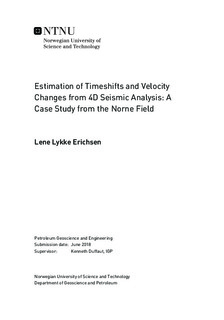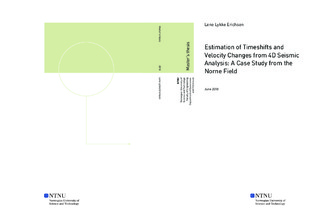| dc.description.abstract | The scope of this thesis is to investigate whether it is possible to determine the vertical strain in the overburden directly from the 4D seismic data from the Norne field in the Norwegian sea, by using changes in traveltime and amplitudes. This will be a new approach to the problem and represent an alternative to the common approach which is to estimate vertical strain in a dedicated numerical geomechanical model that is used in combination with 4D seismic data.
The data was analyzed using two different methods. Method 1 keeps the seafloor constant and calculates the timeshifts, relative timeshifts and relative velocity changes from the seafloor and down to each interpreted horizon. Thus, the thickness of the intervals increase with depth. Method 2 calculates the timeshifts, relative timeshifts and relative velocity changes between each interpreted horizon, thus the intervals are more unison in thickness.
Both Method 1 and 2 yields the same results when it comes to accumulated timeshifts and accumulated relative timeshifts, while the results for the accumulated relative velocity changes are different when using the two methods.
The calculated strain in this thesis is defined as a product of the relative timeshifts and the relative velocity change and gives the fractional change in thickness of the analyzed interval. Thus, the strain calculation only use data that is obtained directly from the 4D seismic datasets, skipping the geomechanical model.
If the uncertainty of the ∆A Cube and relative velocity changes are disregarded, the calculated strain yielded by Method 2 is more reliable than Method 1 because the strain is not accumulated through the overburden and instead calculated separately in every interval. Thus, a possible miscalculation in a shallow interval does not affect the calculated strain in a deeper interval. | |

